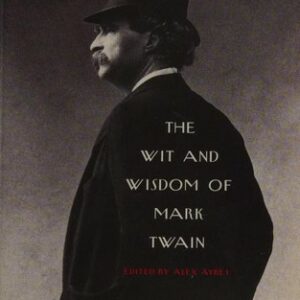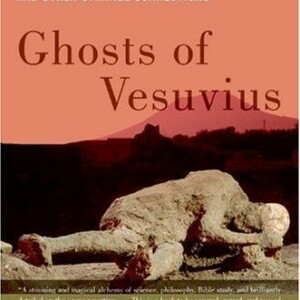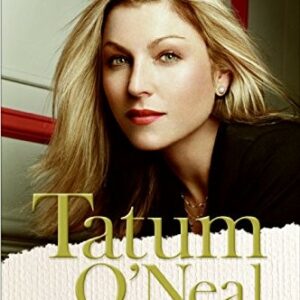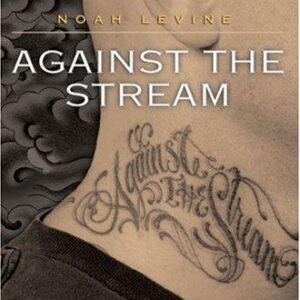Early African-American Classics
$7.99
| Title | Range | Discount |
|---|---|---|
| Trade Discount | 5 + | 25% |
- Description
- Additional information
Description
This essential one-volume collection brings together some of the most influential and significant works by African-American writers of the nineteenth and twentieth centuries.
Included herein are such classics as Frederick Douglass’s Narrative of the Life of Frederick Douglass, An American Slave (1845) and excerpts from W.E.B. DuBois’s The Souls of Black Folk (1903), Harriet A. Jacobs’s Incidents in the Life of a Slave Girl: Written by Herself (1861), Booker T. Washington’s Up from Slavery (1901), and James Weldon Johnson’s The Autobiography of an Ex-Coloured Man (1912).
Whether read as records of African-American history, autobiography, or literature, these invaluable texts stand as timeless monuments to the courage, intellect, and dignity of those for whom writing itself was an act of rebellion—and whose voices and experiences would have otherwise been silenced forever.
Edited and with an introduction by Anthony Appiah, who explains the distinctive American literary and cultural context of the time, this edition of Early African-American Classics remains the standard by which all similar collections will inevitably be compared.Kwame Anthony Appiah is the author of The Ethics of Identity, Thinking It Through: An Introduction to Contemporary Philosophy, The Honor Code, and the prize-winning Cosmopolitanism. Raised in Ghana and educated in England, he has taught philosophy on three continents and is currently a professor at Princeton University.Introduction by Anthony Appiah
The "American Negro," W.E.B. Du Bois writes in the Souls of Black Folk,
ever feels his twoness—an American, a Negro; two souls, two thoughts, two unreconciled strivings….
The history of the American Negro is the history of this strife,—this longing to attain self-conscious manhood, to merge his double self into a better and truer self…. He simply wishes to make it possible for a man to be both a Negro and an American….
It is always important, then, to remember that African-American writing is American. The African-American classics gathered here—Frederick Douglass’s 1845 Narrative, Harriet Jacobs’s Incidents in the Life of a Slave Girl, Booker T. Washington’s Up from Slavery, and James Weldon Johnson’s Autobiography of an Ex-Colored Man—have an American literary and cultural context without which they cannot be understood. Indeed, as we shall see, the narratives of self-fashioning that make up this book are American in their broadest outlines and their minutest details. But it is, of course, crucial too to recall that they are the writings of black men and women. In this brief introduction, I should like to point to some of the major features of these four texts—some they share, some in which they differ—and to the cultural and literary contexts, both American, in general, and African-American in particular, that helped to form them.
It is not too much to say that the popular literature of the Christian world, since the discovery of America, or, at least for the last two hundred years, has been anti-Negro.1
So wrote the West Indian black nationalist, Edward W. Blyden, in Fraser’s Magazine in 1875; and we know all too well that a substantial part of the "anti-Negro" argument was that "Negro" men and women could not master those "sublimer" realms of literate culture and the arts that constituted the highest aspirations of a middle-class Christian culture. The "evidence" proffered for this proposition until the middle of the nineteenth century consisted in large part of the absence of any substantial body of writing by Africans and African-Americans: the few writings by black people of which most Euro-American thinkers were aware they dismissed as derivative or derisory.
Yet if we ask why so little published writing by African-Americans remains to us from before the middle of the nineteenth century, it cannot be out of place to remark that the great majority of black people in the New World until the Emancipation Proclamation were legally prohibited from learning to read and write. The literate slave who read defenses of slavery that assumed the incapacity of the Negro was thus in a double bind. He or she knew that writing—and particularly writing well—was the only effective way to refute this argument; but he or she also knew that writing was forbidden, often on pain—a pain the slave knew well—of the lash. The slaves-turned-writers—Douglass, Jacobs, even Washington—came to writing with the recognition that the very fact of their writing was an act of rebellion, made more substantial by its being published. It is worth noting that the title pages of the two works that were published before emancipation carry the emphatic stipulation "written by himself," "written by herself."
The major goal of these authors was to speak for black Americans, to America and, in particular, to white America. Because these narratives were addressed to an America that did not believe in the ability of the Negro, the authors thought of themselves, not only as witnesses to the condition of black people, but as exemplars—living, breathing, and, above all, writing refutations of the slanders of racism. Even though Johnson’s Autobiography is a personal narrative that begins after slavery—"I was born," the narrator says, "in a little town of Georgia a few years after the close of the Civil War"—its primary goal was similar, perhaps even more ambitious because of the time in which he was writing. Johnson set out to show how African-Americans could now achieve new heights. He demonstrated—though not merely through the act of writing, but also through the character of his protagonist, who is a fine classical pianist and composer—the fact that black people were indeed capable of the highest achievement; while, at the same time, exposing, like his literary predecessors, the pain of the victims of racism.
Because the argument for racial oppression—whether it was slavery or segregation—depended crucially on the claim that black people could not contribute to high culture, every work by an African-American writer, writing as an African-American, was bound to be seen as an argument against that racial oppression. It was not just the achievements of a Douglass or a Jacobs or a Washington, but the fact that they wrote for themselves that mattered. This is why the question of authorship—whether these books were really written by the African-Americans who claimed to have written them—was so central to their reception at the time. That the events recounted in Douglass’s Narrative and Washington’s Autobiography are largely historical, those in Jacobs’s account are lightly fictionalized to protect its author, and Johnson’s is a work of fiction that does not correspond to the details of its author’s life is, for these purposes, not the central issue.
To remark this common set of goals is by no means to deny what is distinctive in each of these narratives. Each protagonist is an exemplar in his or her own way; each offers a life with its own moral, and these various morals reflect the different times in which they were written and the different circumstances of their authors.
Because the intellectual incapacity of the Negro was supposed to show itself especially in the failures of African and African-American literary productivity, it was almost inevitable that the first African-American genre—the slave narrative—would be a form of autobiography. For autobiography aims above all to establish the existence of the author-protagonist as an autonomous agent, a person whose life is worthy of interest, whose experiences and choices matter to us as readers. The African-American writes him or herself into being, by claiming mastery of the privileged sphere of literary production.
Before the Civil War had ended what had come to be called the "peculiar institution," more than a hundred former slaves, men and women with a great variety of experiences and substantially differing literary talents, had written narratives recording their suffering as slaves. The slave narrative is a polemical genre; it makes no bones about it. Its aim is to persuade the reader of the evils of slavery: and unless we recall the real urgency of this objective—unless we remember, for example, that the Fugitive Slave Law was passed by Congress as late as 1850—we cannot fully appreciate the language that the finest of the narratives, the language of Douglass and Jacobs, brings to its polemical task. And nowhere is that language more masterfully handled than in the Narrative of Frederick Douglass.
Frederick Douglass was already an unusual person by the time he published the Narrative of the Life of Frederick Douglass, An American Slave in 1845. He went on, of course, to be one of the most famous Americans of his age. But by 1845, he had already escaped from slavery, taken a new name, and begun to lecture, with great success, to large (usually white) antislavery audiences all over the North. Born Frederick Augustus Washington Bailey in February 1818 at Holm Hill Farm in Talbot County, Maryland, Douglass was the child of a slave mother whom he was barely allowed to know and a white father, whose identity he merely suspected. Raised, until the age of eight, by his grandmother on a plantation, he was transferred to the family of Mr. and Mrs. Thomas Auld in the city of Baltimore, where Mrs. Auld began, against the laws of the state, to teach him to read. Though Thomas Auld forbade her to continue—because, he said, it would make Douglass unfit for slavery—Douglass carried on by himself, gleaning what he could from white playmates in the streets of Baltimore, and watching "ship carpenters, after hewing, and getting a piece of timber ready for use, write on the timber the name of that part of the ship for which it was intended."
At the age of sixteen, when his first master died, Douglass was returned to work as a field hand on a plantation, where he was sent to a "slave-breaker," because he was already displaying—in part as a result of the greater freedom he had experienced as an urban slave—the independence of spirit that was to lead him, finally, to escape from slavery. In one of the most powerful passages of his Narrative, Douglass describes how he finally resisted the beatings of Edward Covey, the slave-breaker: "You have seen how a man was made a slave," he writes; "you shall see how a slave was made a man."
When, after this episode, Douglass was returned to Baltimore, he was allowed to apprentice himself to a caulker in the shipyards, paying all of his wages to his master; but he also learned to write, apparently by copying the letters written by carpenters on timbers in the Baltimore shipyards.
When a piece of timber was intended for the larboard side, it would be marked thus—"L." When a piece was for the starboard side, it would be marked thus—"S." . . . I soon learned the names of these letters. . . . I immediately commenced copying them.
Finally, on September 3, 1838, Douglass escaped, using forged papers written for him by Anna Murray,2 a free black woman, who became, almost at once, his first wife. Douglass settled in New Bedford, Massachusetts, where he was hospitably received by Mr. Nathan Johnson who chose for him his new name of Douglass. Racial prejudice prevented Douglass from plying his trade as a caulker, and he made a living as a laborer. Three years later, much influenced by William Lloyd Garrison’s antislavery weekly, The Liberator, Douglass attended a meeting of the Massachusetts Antislavery Society where he was asked to speak of his life as a slave.
We know that Douglass’s account made a substantial impression, for the society took him on as a lecturer, paying him to travel the country speaking against slavery out of his experiences as a slave. The Narrative was, in essence, part of this antislavery work, but its publication allowed for the possibility that he would be recaptured and returned to his master. As a result, Douglass traveled to Britain to lecture against slavery, and there, too, he was extremely well received. While in England, British antislavery activists purchased Douglass from Auld: from then on, he was a free man, speaking and writing for his enslaved brothers and sisters.
Douglass went on to work as a lecturer, journalist, and editor, campaigning for the rights of blacks and women, publishing the North Star (which became Frederick Douglass’s Paper) in Rochester, New York from 1847 to 1860. During the Civil War, he worked as an advisor to President Lincoln, campaigning to recruit free blacks and former slaves to the Union Army: his own two sons signed up for black regiments in Massachusetts. Throughout reconstruction, Douglass campaigned for the extension of full civil rights to the freedmen, and he served Republican administrations as assistant secretary to the Santo Domingo Commission, in 1871; as marshal and, later, recorder of deeds to the District of Columbia, from 1877 to 1886; and finally as U.S. minister and consul general to Haiti, from 1889 to 1891. Douglass died in Washington in 1895.
Though Douglass revised and extended his life story twice more in his life, publishing My Bondage and My Freedom in 1855 and the Life and Times of Frederick Douglass in 1882, it is the Narrative that occupies a special place in American and African-American letters. This is true in large part because of the power it derives from its extraordinary compression. In less than a hundred pages of vigorously eloquent English, Douglass both establishes the horrors of slavery and lays claim to his own life. The slave who was forbidden to write, claims writing as his occupation regardless of his master and the law. Even the more extravagant passages, whose grandiloquence will strike some contemporary tastes as excessive—the apostrophe to the "beautiful vessels, robed in purest white" on the Chesapeake stands out here—have a rigor that demands respect. The opposition between the sailing ships, "loosed from [their] moorings, . . . free . . . freedom’s swift-winged angels" and Douglass "fast in chains, . . . a slave . .. confined in bands of iron" is more than a casual metaphor; it prepares the way for Douglass’s escape through the shipyard to literacy and freedom.
And sometimes, as here in a passage that places the suffering of his grandmother in the wider context of the anguish of slave motherhood, Douglass writes sentences that could hardly be improved:
The hearth is desolate. The unconscious children, who once sang and danced in her presence, are gone. She gropes her way in the darkness of age, for a drink of water. Instead of the voices of her children, she hears by day the moans of the dove and by night the screams of the hideous owl. All is gloom.
If, in the end, there is one rhetorical feature above all that gives the Narrative its power, it is, surely, that it does not need to speak out against slavery: in recounting, in his own written words, the life of this singular slave, it made a case against slavery more powerful than a thousand appeals to abstract principle. As a correspondent to the National Anti-Slavery Standard wrote (in discussing Harriet Jacobs’s Incidents in 1861): "They are the strongest witnesses who leave the summings up to the judge, and the verdict to the jury."3
Where Douglass’s Narrative had begun "I was born in Tuckahoe, near Hillsborough . . ." Harriet Jacobs starts Incidents in the Life of a Slave Girl (published sixteen years later in 1861) with a direct address to the reader: "Reader, be assured this narrative is no fiction." And this more personal mode, with its appeal to an acknowledged reader, reflects the fact that Harriet Jacobs’s experiences are those of an African-American woman. For Jacobs’s writing draws not only on the traditions of the slave narrative genre but also on the—then still largely white—traditions of the sentimental novel, which is, of course, the exemplary genre of nineteenth century women’s writing. And it is in this tradition that the book’s opening is rooted. Jacobs writes at the end of her narrative (once more addressing the imagined reader):
Reader, my story ends with freedom; not in the usual way, with marriage.
But whereas this is, indeed, "the usual way" of the slave narrative (which must end with freedom), it is the usual ending of the sentimental novel. And it is to the mores of the sentimental novel and its readers that Jacobs addresses the passages in which she excuses herself for what she euphemistically refers to as her "headlong plunge" into unwed motherhood.
O virtuous reader! You never knew what it is to be a slave; to be entirely unprotected by law or custom; to have the laws reduce you to the condition of a chattel, entirely subject to the will of another…. I know I did wrong…. Still in looking back, calmly, on the events of my life, I feel that the slave woman ought not to be judged by the same standards as others.
What is clear in this passage, as in many others, is that Incidents is addressed to an audience of free, white women; and its language places the author, oddly, on the same side of the moral divide as these imagined readers, even as it describes an experience so radically different from theirs. In particular, whenever "Linda Brent" (as Jacobs called herself in the narrative) converses with a black person, her own voice remains that of a middle-class white speaker, while her interlocutor is trapped in the conventions of transcribing "Negro dialect." The result is sometimes, unintentionally, comical. Here is an exchange between Linda and Betty, the black woman servant of the white woman who first conceals Linda.
Linda has just told her that another of the servants had been trying to get into the room where she has been concealed.
"Tut! tut! chile!" exclaimed Betty, "she ain’t seen notin’, nor hearn notin’. She only ‘spects something. Dat’s all. She wants to fine out who hab cut and make my gownd. But she won’t nebber know. Dat’s sartin. I’ll get missis to fix her."
I reflected a moment, and said, "Betty, I must leave here tonight."
"Do as you tink best, poor chile," she replied. "I’se mighty ‘fraid dat ‘ere nigger vill pop on you some time."
If there is a black and a white voice in this exchange, the white voice is surely Linda’s: and, bracketed by the energetic play of Betty’s language, Linda sounds stilted, even prissy. What is explicitly true in Jacobs’s narrative is implicitly true of Douglass’s. The slave narrative is addressed to those who had it in their power to act against slavery: and they, of course, were white.
If Incidents does not always fully reconcile the conventions of slave narrative and sentimental novel, it surely reflects the tensions of trying to argue against slavery and the oppression of women at the same time. Indeed, the scholar Valerie Smith has suggested that we see the tensions in the narrative as exposing the inadequacies of each genre: of the (masculine) slave narrative as a medium for discussing women’s rights, and of the (white) sentimental novel as a framework for addressing the specific condition of the black woman.4 As Smith says: "Her story is not what is yielded up after one superimposes the story of (white) woman’s experience over that of black (male) experience. Rather, her unique cultural experience requires her to question the assumptions of literary conventions."5 If there is another central contrast between Jacobs’s narrative and Douglass’s, it is that for Douglass to be free is "to be a man." It is through an act of physical resistance—the fight with Covey—that Douglass begins his psychic escape from bondage. For Jacobs, on the other hand, freedom is, above all, freedom from sexual harassment, freedom to be a mother. While Douglass is preoccupied with his own liberation, which will enable him to struggle for the liberation of all slaves, Jacobs’s concern is with her children. When she seeks to indict slavery, she often does it through expressions of concern for her young ones: "I would ten thousand times rather that my children should be the half-starved paupers of Ireland than to be the most pampered among the slaves of America."
Who, then, was the author of Incidents, the woman who called herself "Linda Brent," the slave mother who struggled mightily so that her children could be free?
Harriet Jacobs, abolitionist, activist, and feminist, was born a slave in Edenton, North Carolina. Like most slaves, she had no precise record of her birth, but she was probably born in 1813.6 Orphaned as a child, she was willed by her first mistress (who died when Jacobs was eleven) to Matilda Norcom, the three-year-old daughter of a neighboring doctor’s family. Dr. Norcom subjected her to persistent sexual harassment almost from the first, but she consistently resisted him. In her teens she had two children—a girl, Louisa Matilda, and a boy, Joseph—by a local white lawyer, and the protection of these children became her major preoccupation for much of the next two decades, eventually leading her to escape from slavery. In 1835, Jacobs was transferred from the house in Edenton to work at Auburn, one of Norcom’s plantations, because she continued to refuse his proposal that he set her up as his "mistress." There she heard that he planned to move her children away from the house of her grandmother—a free woman, who plays an important role in Incidents—and decided that she must escape in order that they should not be subjected to plantation slavery.
In what is surely the most extraordinary episode in an extraordinary life, Jacobs then faked an escape to the North, disappearing, in fact, into an attic at her grandmother’s house. There she remained for nearly seven years, able to watch her children grow. She arranged that the children should both be bought by their father, and that Louisa Matilda should be taken to Brooklyn where she could be educated; and she even wrote letters to be sent from New York and Boston in order to mislead Norcom as to her whereabouts. Finally, in 1842, she escaped to the North. She found her daughter in Brooklyn, arranged for her son to move to Boston with her brother, and worked as a nursemaid for a Mr. and Mrs. Willis.
During the next decade, Norcom came regularly to New York, seeking to recapture Jacobs, who was eventually forced to flee to Boston with Louisa Matilda, in October 1844. When Mrs. Willis died, her husband persuaded Jacobs to travel as his daughter’s nurse to England. On her return—which brought the unhappy news that her son had been the victim of racial attacks in his apprenticeship as a printer and had shipped off to sea—she placed her daughter in a private school and moved to Rochester, where she worked in the antislavery reading room and in the bookstore above the offices of Frederick Douglass’s paper the North Star. It was during this period that she met and went to live with the Quaker abolitionists Amy and Isaac Post. Amy Post, abolitionist, feminist activist, and author, was to be her friend—and correspondent—for many years. It was also Post who first urged her to write her own story in order to strengthen the abolitionist cause.
In 1850, with the passage of the Fugitive Slave Law, Jacobs’s freedom was again put at risk; and Matilda Norcom, now a married adult, threatened to seize Louisa Matilda if Jacobs did not return to slavery, on the (spurious) grounds that the sale of Louisa Matilda to her father had been illegal. In order to regularize her position and make sure that her children were secure, Mr. Willis and his second wife finally bought Harriet Jacobs in 1852—for three hundred dollars—and freed her. While continuing to work for the Willis’s, she began, under Amy Post’s promptings in their voluminous correspondence, to write the story of her life. Beginning with shorter pieces written for newspapers, she eventually composed the whole of Incidents.
Getting it published was something of a struggle. After trying a number of publishers, she found one that would publish the work . . . but only if it had an introduction by the well-known abolitionist author, Lydia Maria Child. So Jacobs made contact with Child, who agreed to a collaboration. Finally, towards the end of 1860, the Boston firm of Thayer and Eldridge agreed to a contract. But this firm went bankrupt a few months later. Somehow Jacobs managed to acquire the plates and to arrange for a printer to produce the volume for her. When Incidents first appeared, Harriet Jacobs had, in effect, published it herself.
The slave narratives are the first truly African-American genre.7 (It can be argued that they are the first truly distinctively American genre.) The sophistication with which Douglass’s Narrative handled the telling of the central episodes of an exemplary life make it a natural model for later African-American autobiography. As we have seen, the idea that the struggle for literacy lies at the heart of the struggle for freedom is an organizing principle of Douglass’s book. There is no doubt that, in part because of Douglass, this theme is central to later African-American writing. And nowhere do we see this theme more strikingly developed than in the autobiography of Booker T. Washington, the greatest black educator of the nineteenth century.
Booker Taliaferro Washington, the author of Up from Slavery, was born on April 5, 1856, in Franklin County, Virginia. Like Douglass, he was the son of a black slave woman and an unknown white man. After emancipation, his family moved to West Virginia, to the mining town of Malden, where he worked in various manual jobs, including a period in the coal mines. The hard-won schooling that Washington was able to get in Malden was rudimentary, but it inspired in him a deep longing for education that lead him to the Hampton Institute in Virginia at the age of sixteen, where he worked his way through school as a janitor. On graduation, Washington returned as a teacher to Malden, and, after a few months at a seminary in Washington, D.C., he returned to join the staff of Hampton as a teacher.
When, in 1881, the state of Alabama authorized the creation of a black school at Tuskegee (while neglecting to provide any financing for it), Hampton Institute principal, General Samuel C. Armstrong, whom Washington had impressed mightily, recommended that they ask his young colleague to head it. Working with the local community, both black and white, Washington built Tuskegee into the preeminent black-run college in the nation.
Washington’s success at Tuskegee depended as much on his careful cultivation of his white neighbors as on the manifold successes of his black students. By insisting on training his students to work with their hands—Tuskegee was largely built by its earliest students—he managed not to threaten the world of white Alabamians. Washington’s work did not challenge the established racial economy of an increasingly segregated South. His graduates were well-trained brickmakers and farmers and domestic servants; and they were also literate and numerate.
Building on the reputation he acquired as the founder of Tuskegee, and especially on his good relations with powerful white Alabamians, Washington gradually became the most powerful black man in America, the confidant of Andrew Carnegie and John D. Rockefeller, and advisor to Presidents Theodore Roosevelt and Taft. W.E.B. Du Bois wrote at the start of the third essay of The Souls of Black Folk: "Easily the most striking thing in the history of the Negro since 1876 is the ascendancy of Mr. Booker T. Washington."
Washington’s story, as he tells it in Up from Slavery, is very much the story of the American self-made man. While Washington constantly records his dependence on a few others—and above all on General Samuel C. Armstrong—what one is most aware of is his own consistent struggle to achieve. Washington’s struggle was, as we see again and again in his narrative, entirely within the segregated spaces that were codified in 1896 by the Supreme Court’s decision, in Plessy v. Ferguson, to uphold the notion that segregation could create two communities "separate but equal." And he is constantly reminding his readers that the two communities can live and work side by side while remaining, as he said in the Atlanta Exposition Address of 1895, "[i]n all things purely social . . . as separate as the fingers, yet one hand in all things essential to mutual progress."
Contemporary readers may find Booker T. Washington’s racial deference embarrassing. We may be less than enthusiastic about Washington’s claim that many former slaves cared for their old masters, since he makes it in terms that oblige him to add:
From some things that I have said one may get the idea that some of the slaves did not want freedom. This is not true.
But we can surely share his sense of pride in the extraordinary work he did in creating Tuskegee—as a black institution, dedicated to excellence—in the heart of the South as the promise of emancipation faded.
Indeed, if we reflect how much Washington achieved in the way of the building of black institutions in those unpromising times between the end of Reconstruction and the First World War, we may come to share the critic Houston A. Baker’s conclusion that, in playing the "Uncle Tom" in carefully stage-managed displays of ritual racial deference, Washington was manipulating the white power structure to achieve black empowerment. A more than superficial reading of Up from Slavery will reveal key moments at which Washington allows his resistance to show through.
We see a brief—and exemplary—flash of this resistance when Washington, in discussing "the exact condition, mental and moral, of the coloured ministers in the South," observes that "[t]he picture painted was a rather black one—or, since I am black, shall I say ‘white’?" At a moment when we least expect it, when Washington is acknowledging the deficiencies of black ministers of religion, his wit sharply reminds his white readers of the deal he is making with them: separate, yes, but equal; and equality means that he may use "white" as a term of derogation in symmetry with white uses of "black." Whenever Booker T. is caught "bowing and scraping" to "white folks," we should remember that he is also the man who wrote these words:
From any point of view, I had rather be what I am, a member of the Negro race, than be able to claim membership with the most favored of any other race.
When Washington died in 1915, he had been the preeminent African-American for well more than a generation; and his connections, the empowerment that he bought at what some have thought too high a price, had allowed him to exercise substantial patronage. Among those he had helped along—by getting him employment in the United States consular service in Latin America—was the author of the last of our African-American classics of self-creation, James Weldon Johnson.
Johnson was born in Jacksonville, Florida, in 1871. His father was a headwaiter at a luxury hotel, and his mother a teacher at the Stanton School. Because his parents were relatively affluent, they were able to send him to college at Atlanta University, a black college, where he excelled. He studied music, touring New England with the Atlanta University Quartet during the summer vacation, did well in his studies and his sports, and delivered the commencement oration in 1894. After college he returned home to teach at the school where his mother had taught, while founding a newspaper, The Daily American, and studying for the Florida bar. In 1898 he became the first black person to be admitted to the bar in Duval County, Florida.
He went into partnership with Judson Wetmore, a college friend from his Atlanta days, who had gone to law school at the University of Michigan while "passing for white." Unsurprisingly, many have seen in Wetmore’s experiences the germ of the idea for The Autobiography of an Ex-Colored Man, which records the life of a light-skinned African-American, who decides toward the end of the book to disappear into the white world, becoming "an ordinarily successful white man who has made a little money."
In the early years of the century, Johnson moved to New York City, where he had a second successful career as a songwriter, collaborating with his brother John in writing such classic popular songs as "Under the Bamboo Tree," and composing what is considered to be the black national anthem "Lift Every Voice and Sing," which remains, of course, as one of the classics of the African-American hymnology.
In the following years, he served under Roosevelt and Taft as a consul, first in Venezuela, from 1906 to 1909, then in Nicaragua, for the next three years. When he returned to the United States, Johnson became editor of The New York Age, the country’s premier black newspaper in 1914. Two years later he became field secretary for the NAACP, recruiting members and starting branches around the nation; and in 1920 he started a decade of service as executive secretary of the organization. In 1930 he accepted a chair of creative literature at Fisk University, where he worked until he was killed in a tragic car accident in June 1938.
During all these years of public service, Johnson wrote a corpus of poetry and fiction that was one of the central monuments—and most profound influences—of the Harlem Renaissance: not only did he publish the Autobiography, written while he was in Nicaragua, in 1912; he also published scores of popular songs; Fifty Years and Other Poems, in 1917; The Book of American Negro Poetry, in 1922; The Book of American Negro Spirituals in 1925; Black Manhattan, in 1930; and many profoundly influential essays, including, in 1920, a series of four pieces in The Nation exposing abuses in the American occupation of Haiti.
The preoccupations of Johnson’s varied life are reflected throughout the Autobiography: in his concern for black folk-culture, which he describes; his love of music; and his deep political concern epitomized in the discussions of the "Negro question" and the extraordinarily powerful description of a lynching that is the fulcrum of the plot. Johnson’s protagonist, an African-American light-skinned enough to "pass" for white, responds to the Southern lynching by a flight northwards into whiteness. Nothing could more clearly embody Du Bois’s recognition that the Negro in America is "two souls" than Johnson’s extraordinary account of the life of a man who is able to live as an African-American among white people who do not recognize him as such.
Johnson’s writing is often extremely vivid: the evocation of young love in the second chapter is sharply observed and masterfully written. And even though much of what he writes is explicitly addressed to racial politics, this work of fiction, unlike the more strictly biographical works of Douglass, Jacobs, and Washington, is able to explore questions of landscape—as at the beginning of chapter 4—that are, in an obvious sense, more purely literary, less tied to the central polemical intention of the work. If Johnson’s work is so central to the work of black writers from the Harlem Renaissance on, it is in part because it begins the escape from the more strictly political motivations of the slave narrative and Washington’s parable of elevation.
As Houston A. Baker, Jr. has observed, "the authentic geography of the American imagination can only be mapped by first surveying slave territory."8 The slave narratives explore in the starkest circumstances the self-creation that is the central theme of American writing in the nineteenth century. Douglass’s Narrative is surely the sublimest of the slave narratives. In Jacobs’s rewriting of the genre into the structure of the sentimental novel, we find one of the earliest and strongest of the African-American women’s voices that have come to be so central to our current literary culture. Washington seems to offer a dark-skinned rewriting of the nineteenth-century success story—but with an eye toward collective empowerment. And Johnson begins to write the story of African-American culture in the contemporary world. From slavery to freedom, from Douglass to Johnson, these African-American classics record the claim of African-American culture on America, the strivings in "The Souls of Black Folk"; which is why I have prefaced these narratives of soul-making with the first essay from Du Bois’s great American classic.
NOTES
1. E.W. Blyden, Christianity, Islam and the Negro Race (1887), reprinted (Edinburgh: Edinburgh University Press, 1967), p. 17; from an essay in Fraser’s Magazine in 1875.
2. You will notice that Douglass keeps this fact concealed in the 1845 narrative: he was still a fugitive and his wife’s pass-writing had, of course, been illegal.
3. This letter is cited on page 25 of Jean Fagan Yellin’s introduction to her scholarly edition of Incidents in the Life of a Slave Girl (Cambridge, MA: Harvard University Press, 1987).
4. See her introduction to the Schomburg Library edition of Linda Brent’s Incidents (New York: Oxford University Press, 1988), p. 133.
5. Yellin, op. cit. pp. 37-38.
6. For a more detailed account, see Yellin’s introduction to her edition of Incidents (op. cit.).
7. This is not to deny its antecedents in slave narratives published in Britain in the eighteenth century. But by the Civil War, the slave narrative was the preeminent form of African-American writing.
8. Houston A. Baker, Jr., "Introduction" to the Penguin edition of Douglass’s Narrative (New York, 1982), p. 13. And see his The Journey Back (Chicago: Chicago University Press, 1980).
From "The Souls of Black Folk", W.E.B. DuBois, 1903:
Between me and the other world there is ever an unasked question: unasked by some through feelings of delicacy; by others through the difficulty of rightly framing it. All, nevertheless, flutter round it. They approach me in a half-hesitant sort of way, eye me curiously or compassionately, and then, istead of sayingdirectly, How does it feel to be a problem? they say, I know an excellent colored man in my town; or, I fought at Mechanicsville; or, Do not these Southern outrages make your blood boil? At these I smile, or am interested, or reduce the boiling to a simmer, as the occasion may require. To the real question, How does it feel to be a problem? I answer seldom a word.
And yet, even being a problem is a strange experience, – peculiar even for one who has never been anything else, save perhaps in babyhood and in Europe. It is in the early days of rollicking boyhood that the revelation first bursts upon one, all in a day, as it were. I remeber well when the shadow swept across me. I was a little thing, away up in the hills of New England, where the dark Housatonic winds between Hoosac and Taghkanic to the sea. In a wee wooden schoolhouse, something put it into the boys’ and girls’ heads to buy gorgeous visiting cards -ten cents a package – and exchange. The exchange was merry, till one girl, a tall newcomer, refused my card, -refused it peremptorily, with a glance. Then it dawned upon me with a certain suddenness that I was different from the others; or like, mayhap, in heart and life and longing, but shut out from their world by a vast veil. I had thereafter no desire to tear down that veil, to creep through; I held all beyond it in common contempt, and lived above it in a region of blue sky and great wandering shadows. That sky was bluest when I could beat my mates at examination-time, or beat them at a foot-race, or even beat their stringy heads. Alas, with the years all this fine contempt began to fade; for the words I longed for, and all their dazzling opportunities, were theirs, not mine. But they should not keep these prizes, I said; some, all, I would wrest from them. Just how I would do it I could never decide: by reading law, by healing the sick, by telling the wonderful tale that swam in my head, -some way. With other black boys the strife was not so fiercely sunny: their youth shrunk into tasteless sycophany, or into silent hatred of the pale world about them and mocking distrust of everything white; or wasted itself in a bitter cry, Why did God make me an outcast and a stranger in mine own house? The shades of the prison-house closed round about us all: walls strait and stubborn to the whitest, but relentlessly narrow, tall, and unscaleable to sons of night who must plod darkly on in resignation, or beat unavailing palms against the stone, or steadily, half hopelessly, watch the streak of blue above.
After the Egyptian and Indian, the Greek and Roman, the Teuton and Mongolian, the Negro is a sort of seventh son, born with a veil, and gifted with second-sight in this American world,-a world which yields him no true self-consciousness, this sense of always looking at one’s self through the eyes of others, of measuring one’s soul by the tape of a world that looks on in amused contempt and pity. One never feels his twoness,-an American. a Negro; two souls, two thoughts, two unreconciled strivings; two warring ideals in one dark body, whose dogged strength alone keeps it from being torn asunder.
The history of the American Negro is the history of this strife,-this longing to attain self-conscious manhood, to merge his double self into a better and truer self. In this merging he wishes neither of the older selves to be lost. He would not Africanize America, for America has too much to teach the world and Africa. He would not bleach his Negro soul in a flood of white Americanism, for he knows that Negro blood made it possible for a man to be both a Negro and an American, without being cursed and spit upon by his fellows, without having the doors of Opportunity closed roughly in his face.
This, then, is the end of his striving: to be a co-worker in the kingdom of culture, to escape both death and isolation, to husband and use his best powers and his latent genius. These powers of body and mind have in the past been strangely wasted, dispersed, or forgotten. The shadow of a mighty Negro past flits through the tale of Ethiopia the Shadowy and of Egypt the Sphinx. Through history, the powers of single black men flash here and there like falling stars, and die sometimes before the world has rightly gauged their brightness. Here in America, in the few days since Emancipation, the black man’s turning hither and thither in hesitant and doubtful striving has often made his very strength to lose effectiveness, to seem like absence of power, like weakness. And yet it is not weakness,-it is the contradiction of double aims. the double-aimed struggle of the black artisan- on the one hand to escape white contempt for a nation of mere hewers of wood and drawers of water, and on the other hand to plough and nail and dig for a poverty-stricken horde- could only result in making him a poor craftsman, for he had but half a heart in either cause. By the poverty and ignorance of his people, the Negro minister or doctor was tempted toward quackery or demagogy; and by the criticism of the other world, toward ideals that made him ashamed of his lowly tasks. The would-be black savant was confronted by the paradox that the knowledge his people needed was a twice-told tale to his white neighbors, while the knowledge which would teach the white world was Greek to his own flesh and blood. The innate love of harmony and beauty that set the ruder souls of his people a-dancing and a-singing raised but confusion and doubt in the soul of the black artist; for the beauty revealed to him was the soul-beauty of a race which his larger audience despised, and he could not articulate the message of another people. This waste of double aims, this seeking to satisfy two unreconciled ideals, has wrought sad havoc with the courage and faith and deeds of ten thousand thousand people,- has sent them often wooing false gods and invoking false means of salvation, and at times even seeemed about to make them ashamed of themselves.US
Additional information
| Weight | 13.4 oz |
|---|---|
| Dimensions | 1.7800 × 4.1200 × 6.7000 in |
| Imprint | |
| Format | |
| ISBN-13 | |
| ISBN-10 | |
| Author | |
| Audience | |
| BISAC | |
| Subjects | african american literature, black history books for adults, FIC049040, anthologies, FIC003000, short stories collections, classic fiction, short story collections, long story short, classics books, african american books, books fiction, fiction books, classic books, classic literature, short story anthology, philosophy, african american fiction, african american novels, essays, historical fiction, anthology, african american history, black history, short stories, classic novels, novels, classics, fiction, classic, african american |










